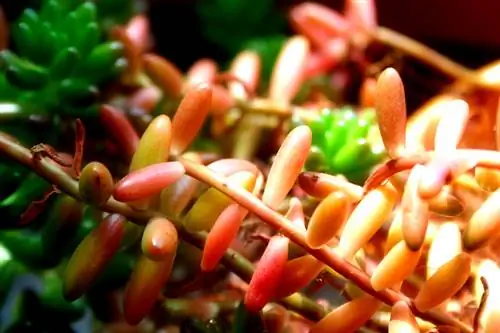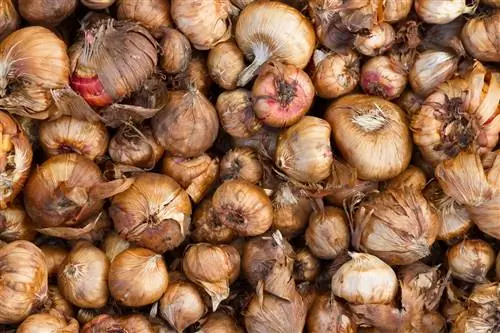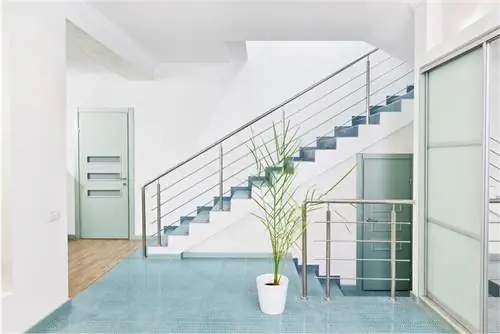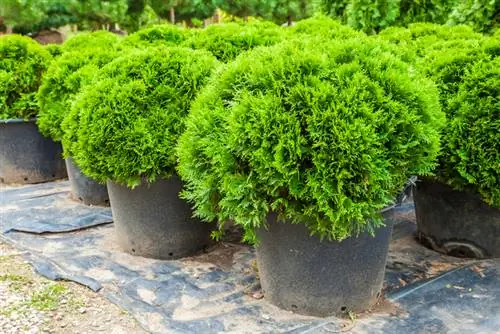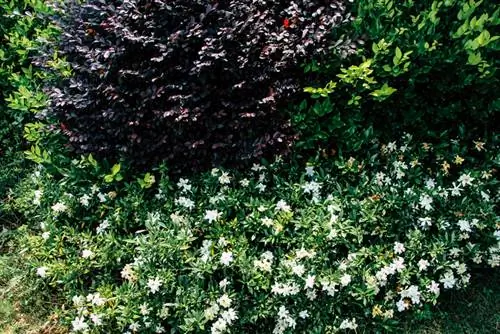- Author admin [email protected].
- Public 2023-12-16 16:46.
- Last modified 2025-01-23 11:22.
Waterweed is a popular plant when it comes to planting a garden pond. Except for one species, it is native to this country. Therefore, the requirements for their settlement are not difficult to meet. Care can also be mastered.

Why is waterweed good for the garden pond?
Waterweed is suitable as a garden pond plant due to its robustness, rapid growth and ability to prevent algae blooms. It thrives in sunny to partially shaded locations and in both cold and warm water temperatures. Regular trimming is required to prevent overgrowth.
Your entry into the garden pond
You only need a section of a waterweed plant to create entire underwater forests. It doesn't even have to have roots. Different types are available commercially. Since the plant is not protected, it can also come from the wild. You can plant waterweed in the bottom of the pond or let it float in the water.
Tip
You can find interesting information about this aquatic plant in our profile.
Location and water quality
The waterweed is robust, can grow well in both cold and warm water temperatures and forms shoots up to 3 m long. A sunny spot is required; partial shade is also acceptable. Ideally, the pond water is clean and clear. But even slight cloudiness and dirt do not hinder growth.
Fertilize only when necessary
The water plague draws the necessary nutrients from the pond water and thus prevents algae blooms. If the nutrient concentration falls below your requirements, it will indicate this with paler leaf color. Only then fertilize as follows:
- Use a liquid fertilizer for pond plants (€19.00 on Amazon)
- Dose fertilizer cautiously
- Stop fertilizing when the deficiency symptoms disappear
Cutting and shortening are essential
You almost always have to fight the spread of waterweed so that other aquatic plants don't fall by the wayside. Thin them regularly or at least shorten the shoots.
The water plague serves as a spawning ground for newts. Wait until June to prune until all the larvae have had a chance to hatch. Do not drop any clippings into the water as new plants will grow from them and increase the overgrowth.
Tip
Place the waterweed in the pond with a plant basket so that you can later remove the plant from the pond more easily for the required volume limitation.
Overwintering usually takes place in the pond
Native waterweed species are sufficiently hardy to spend the entire winter outside in a pond that is not completely frozen over. Only the Argentine waterweed is partially hardy. If you have an aquarium, you can overwinter a piece of it in case the specimen freezes to death outdoors. Since this species also needs light in winter, it can also survive in a pond that is covered with snow.
In autumn, the shoots of waterweed turn brown and sink to the bottom of the pond. So that they do not impair the water quality through putrefactive processes, you should fish them out of the water in autumn, leaving only a small residue.


